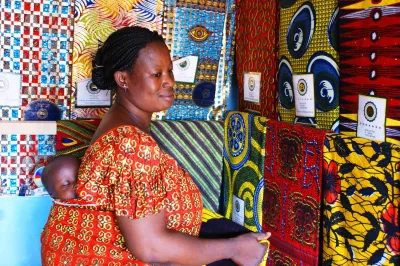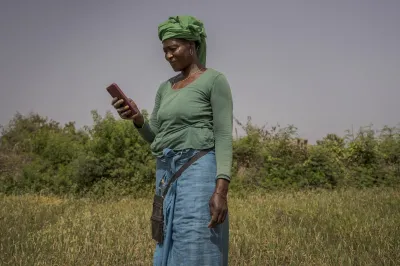Savers Deserve More Attention and Protection
Only 23 % of adults who live on less than $2 per day have an account in a formal financial institution (Findex 2011), making financial inclusion for the poor a huge challenge. More and more countries are committed to connecting the poor to the financial services needed to improve their lives and many strategies are geared in particular to expanding access to savings, and not only access to credit or payment services. While we encourage these initiatives we also call for caution.
The regulation and supervision of deposit-taking financial institutions is a key element to build trust and ensure the protection of low-income depositors. This is particularly true in francophone West and Central Africa, which has a long tradition of deposit mobilization through formal community driven institutions, such as cooperatives that build on traditional mechanisms like rotating savings and credit associations (ROSCAS). However the experience of many savers in these microfinance institutions from this region has been in some cases very unfortunate as many have lost money and trust and have been left without protection.

Photo by Mary Thibaut
A CGAP study of 17 MFIs in francophone West and Central Africa revealed that while these MFIs have mobilized more than US$170 million in deposits from more than a million customers, they have been put under temporary administration by the government during the last decade because of mismanagement that could hurt depositors and other clients. In the absence of explicit deposit insurance mechanisms, the failure of one of these MFIs risks the customer losing their deposits — which in fact has already happened in several cases with depositors unable to recover their deposits.
While banks can collect on their collateral, such as mortgages on buildings, depositors do not have this option. Low income people, who are usually the majority of the clientele of these institutions, are not well informed of their rights, they are poorly organized, and they generally do not protest and do not use legal recourse mechanisms that may be available to them. Very few of them have been reimbursed in the wake of an MFI failure.
If financial inclusion strategies around the world are encouraging access to savings services, the experiences in francophone West and Central Africa call for caution in contexts where regulatory and supervisory capacities are limited and where financial resources are limited to reimburse depositors.
Drawing lessons from the failures and challenging attempts to rescue deposit-taking microfinance institutions in this region, three messages for regulators around the world emerge to ensure effective protection of low-income depositors:
- Crisis can be avoided by the adoption and enforcement of appropriate and effective prudential regulation. It is key to strengthen supervision with a proportionate (i.e., risk-based) approach and include early warning systems with adequate capacity to interpret and prioritize information, as well as set appropriate licensing requirements for deposit-taking institutions (e.g., minimum capital requirements, tighter restrictions when collecting deposits, etc.).
- In the case of MFI failure, supervisory authorities must make decisions without delay and communicate quickly. Reacting as soon as the first red flag goes up reduces the risk of the situation deteriorating to a point when it will be difficult to reimburse depositors. While the recovery plan is undertaken, investing in a communication plan would be helpful—for MFI staff as well as clients—and could contribute to restoring confidence.
- Think through adequate mechanisms to protect or reimburse depositors if something goes wrong. In this respect, a deposit insurance system acts as a financial safety net for account holders in case the financial institution fails and aims to protect retail depositors against insolvencies. This is an important option to explore. Deposit insurance is generally designed to protect less sophisticated depositors and those not well-positioned to assess the safety and soundness of financial institutions.




Comments
An interesting discussion
An interesting discussion about the difficulties that savers have had in West Africa with many of the million savers losing their savings and facing all the usual problems of institutional savings for the poor. There is an alternative, however, that is already in place, that is successfully mobilizing the savings of at least eight million of the village poor in Africa instead of one million. Savings groups have virtually none of the problems so clearly presented in this report and have already demonstrated their capacity to provide a safe convenient place to save and easy access to small loans for the village poor transparently, sustainably and at very low cost without the use of financial institutions at all. I am just completing a book on the topic that will be published by Berrett Koehler in the fall: "In Their Own Hands: How Savings Groups are Revolutionizing Development." In Mali alone savings groups between those trained by Oxfam America/Freedom from Hunger, Plan, Care and Catholic Relief Services have nearly 700,000 members most all of them living on less than $2 per day with most living under $12 per day. Write me at my e-mail address above and I would be happy to send you information.
Another way to address this
Another way to address this challenge is to help strengthen the risk and governance structures of MFIs. Absent a sound internal structure a strong regulatory framework cannot provide full protection to depositors. There are some relatively simple methods that can be implemented in MFIs so that they manage their liquidity risks more accurately, but little has been done yet to promote these methods. The Grameen Foundation has done quite a few case studies on this topic, including one that I authored http://www.grameenfoundation.org/resource/savings-volatility-analysis-c…
My sense is that promotion of savings products so far has focused more on product design and outreach than on the infrastructure/back office to insure that MFIs can manage their savings business prudently.
Thank you for drawing
Thank you for drawing attention to this important issue. Anecdotally, in Benin we heard examples of false MFIs or semi-institutionalized tontines (savings groups) that mobilize deposits while promising credit or large savings group repayments, only to disappear with clients' deposits a few months later. Strengthening back end systems will not solve the problem of how difficult it is for clients to differentiate between authentic financial institutions and scams.
Add new comment